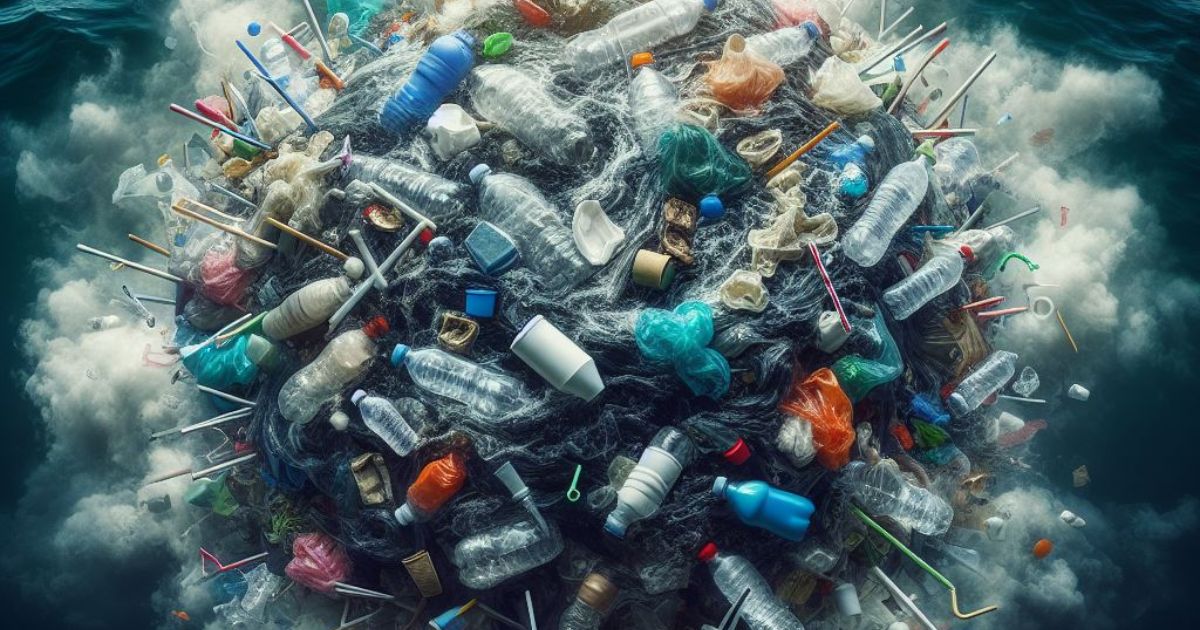
This article is included in these additional categories:
Plastic pollution is a global environmental concern, and rivers significantly transport plastic debris from land to oceans. A recent study titled “On the Vertical Structure of Non-Buoyant Plastics in Turbulent Transport” sheds light on the intricate behavior of plastics within river systems.
Rivers serve as significant contributors to plastic pollution in the world’s oceans. Non-profit The Ocean Cleanup calculates that approximately 1000 rivers are responsible for nearly 80% of the total annual riverine plastic emissions globally, ranging from 0.8 to 2.7 million metric tons annually. Notably, smaller urban rivers emerge as particularly prominent sources of pollution. The remaining 20% of plastic emissions are spread across approximately 30,000 rivers.
According to a team of scientists, the current methods used to count plastic pollution in rivers are inadequate, failing to include fragments that sink below the surface. These submerged plastic particles pose a significant threat to river ecosystems, yet they are often overlooked in pollution assessments.
Settling Behavior of Plastics
Researchers from Cardiff University, Karlsruhe Institute of Technology, and Deltares revealed the shortcomings of existing methods and proposed a new approach to quantify submerged plastics accurately. Lead author James Lofty emphasized the importance of understanding how and where plastic pollution moves in rivers, stating that the inability to account for sinking plastics hampers efforts to assess pollution levels and implement effective cleanup strategies.
Plastics exhibit unique settling patterns due to their geometric anisotropy. Plastic particles don’t simply sink uniformly; their shape, size, and density influence their trajectories in the water column.
To address this knowledge gap, the research team conducted experiments in simulated river conditions, dropping over 3,000 plastic items into water channels and meticulously tracking their movements with multiple cameras. Their findings challenged previous assumptions about the sinking behavior of plastics, showing that fragmented particles sink at variable rates depending on their shape and orientation.
Influence on Plastic Transport
- Near-Surface Layer:
- Plastics often accumulate near the water surface due to their low density.
- Wind-driven currents and turbulence are crucial in redistributing plastics within this layer.
- Suspended Layer:
- Plastics suspended in the water column experience complex interactions.
- Particle-bed interactions enhance mixing beyond what traditional sediment transport models predict.
- The study challenges the classic definition of the bed load layer, as plastics interact with the riverbed in novel ways.
- Bed Load Layer:
- Contrary to conventional wisdom, plastics extend beyond the bed load layer.
- Their transport is influenced by stochastic fluctuations, making them behave differently from natural sediments.
New Vertical Structure Equation
To enhance our comprehension of plastic transport dynamics, the study introduces a novel vertical structure equation. Diverging from conventional theories, this equation acknowledges the stochastic characteristics of heterogeneous negatively buoyant plastics. It accommodates random fluctuations in plastic concentration, thereby offering a more precise depiction of vertical transport processes. Unlike conventional methods like underwater cameras or sonar, which pose practical limitations in river settings, this innovative approach presents a practical solution for accurately assessing plastic pollution levels.
Moving forward, the team plans to refine their method through further experimentation in real river settings and collaboration with industry partners. Professor Catherine Wilson emphasized the significance of their research in providing a clearer understanding of plastic pollution dynamics in rivers and guiding targeted cleanup efforts.
- SEO Powered Content & PR Distribution. Get Amplified Today.
- PlatoData.Network Vertical Generative Ai. Empower Yourself. Access Here.
- PlatoAiStream. Web3 Intelligence. Knowledge Amplified. Access Here.
- PlatoESG. Carbon, CleanTech, Energy, Environment, Solar, Waste Management. Access Here.
- PlatoHealth. Biotech and Clinical Trials Intelligence. Access Here.
- Source: https://www.environmentenergyleader.com/2024/05/a-new-approach-to-assessing-river-plastic-pollution/
